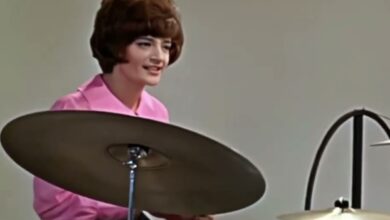This song is as relevant today as it was when it was written
On July 25, 1965, Bob Dylan took the stage at the Newport Folk Festival, marking a pivotal moment in music history. This performance was the live debut of “Like a Rolling Stone,” a track that had been released just days earlier.
Dylan’s decision to perform with an electric backing band was a significant departure from his established acoustic folk style. This shift was met with mixed reactions from the audience, as many folk enthusiasts were unaccustomed to the amplified sound.
Accompanied by members of the Paul Butterfield Blues Band and Al Kooper on organ, Dylan’s set included “Maggie’s Farm,” “Like a Rolling Stone,” and “It Takes a Lot to Laugh, It Takes a Train to Cry.” The electric instrumentation added a new dimension to his music, blending folk and rock elements.
The audience’s reaction was polarized; some embraced the new sound, while others expressed disapproval, leading to a mix of applause and boos. This response has been the subject of much debate, with some attributing the negativity to the brief set length rather than the electric performance itself.
Despite the controversy, this performance is now regarded as a turning point in Dylan’s career, symbolizing his evolution as an artist and his willingness to challenge musical boundaries. It also played a role in the broader acceptance of electric instruments in folk music.
The 1965 Newport performance has been immortalized in various documentaries, including “The Other Side of the Mirror,” which showcases Dylan’s appearances at the festival from 1963 to 1965. This film provides insight into his artistic transformation during this period.
Instruments from this iconic performance have become valuable memorabilia. Notably, the Fender Telecaster played onstage was listed for sale at $275,000, highlighting the enduring significance of this event in music history.
The impact of Dylan’s electric performance at Newport continues to be a topic of discussion and analysis. It has been featured in various retrospectives and articles, underscoring its lasting influence on the evolution of popular music.
For those interested in experiencing this historic moment firsthand, footage of Dylan’s 1965 Newport performance of “Like a Rolling Stone” is available online, offering a glimpse into a defining moment in his career.
In summary, Bob Dylan’s live debut of “Like a Rolling Stone” at the 1965 Newport Folk Festival stands as a landmark event that not only redefined his musical direction but also left an indelible mark on the landscape of modern music.



